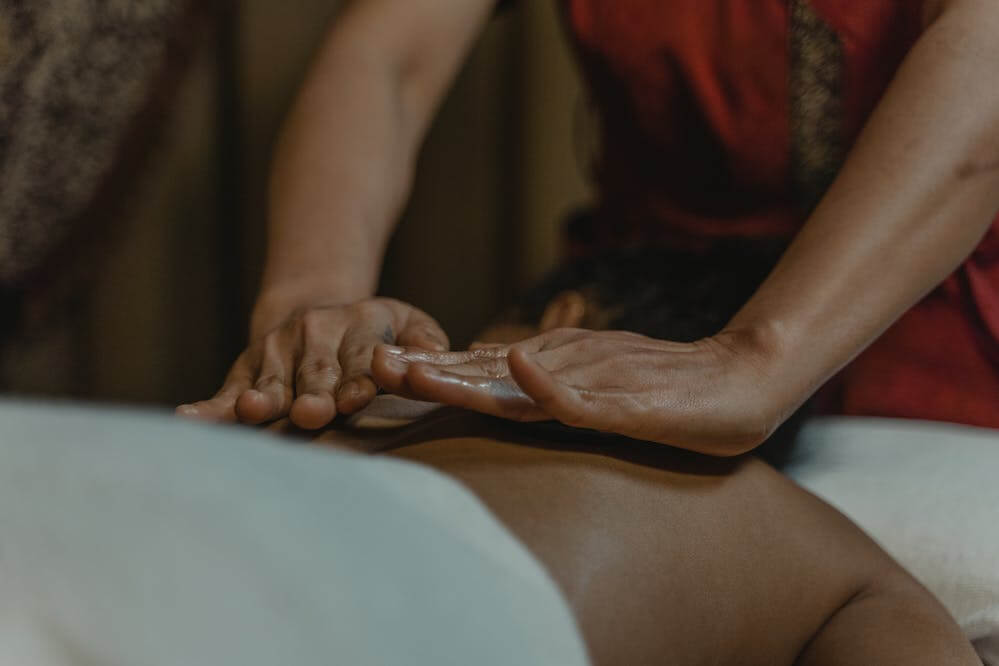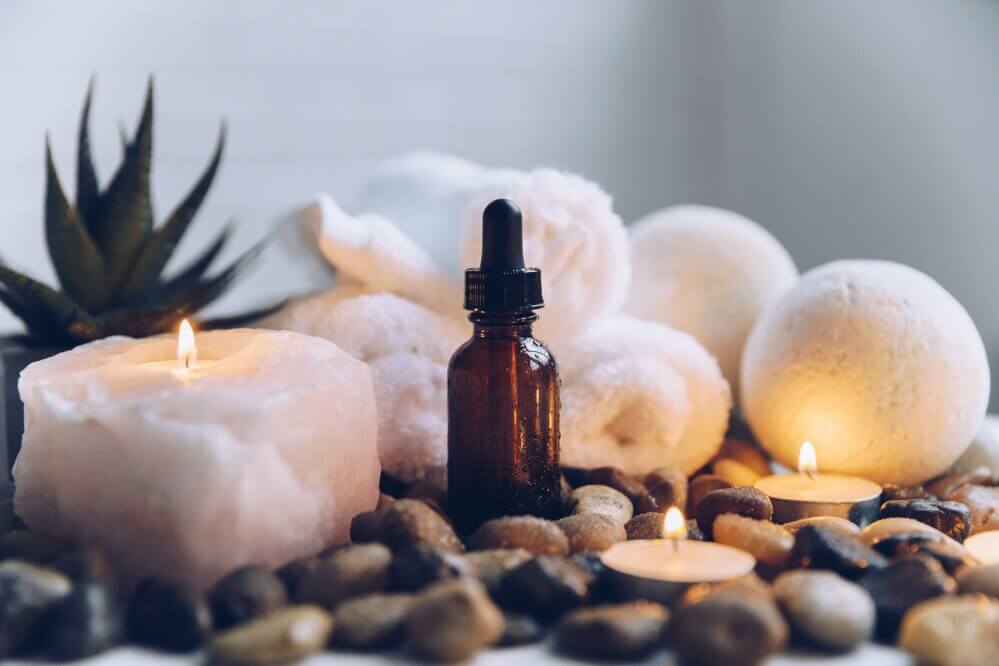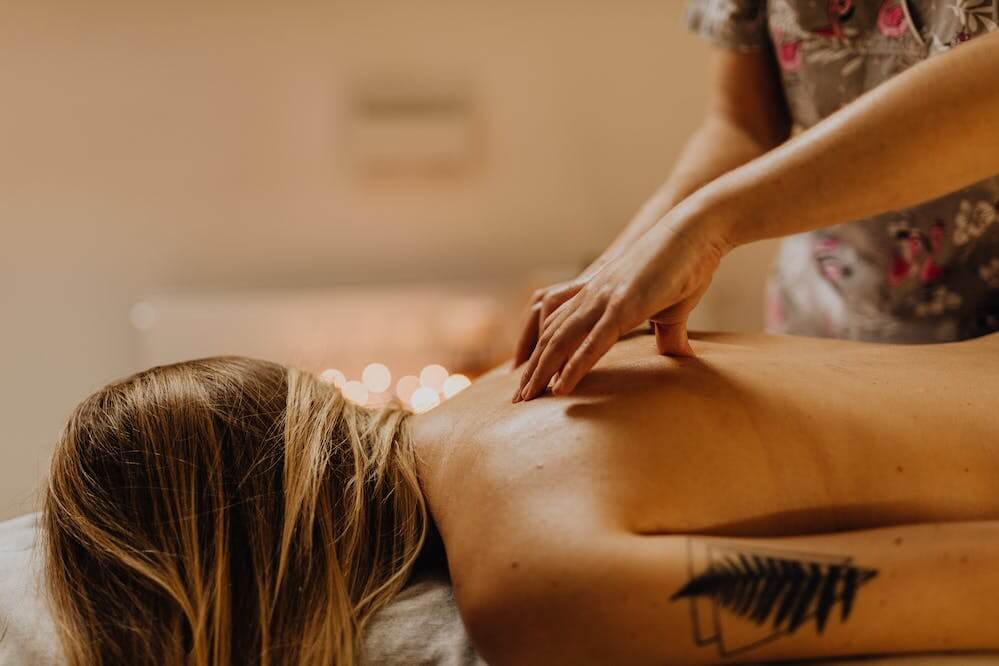Aromatherapy massage is an ancient practice that blends massage therapy with aromatic essential oils to enhance well-being. It harnesses the power of plant extracts to promote physical, mental, and emotional balance.
From ancient civilizations in Egypt, Rome, and Greece to the modern aromatherapy massage we know today, essential oils have been utilized for various purposes, including healing, cosmetics, and perfumes. In aromatherapy massage, these oils are incorporated either diluted with carrier oils and applied directly to the skin or diffused for inhalation during the massage.
Read below and discover how aromatherapy massage can create a holistic experience that nourishes both body and soul.
Aromatherapy Massage Benefits
Aromatherapy massage provides a wide array of benefits for both physical and mental well-being. It promotes deep relaxation of the body and mind, alleviates various types of pain, uplifts mood, and fosters feelings of positivity, making it a multifaceted approach to holistic well-being.
Relaxation
While massages on their own have outstanding relaxation effects, incorporating essential oils adds additional benefits. From a physiological perspective, massages help increase blood circulation, reduce muscle stiffness, and relieve tension. Moreover, massages stimulate the release of endorphins, known for their relaxing and analgesic properties, thus leading to a state of deep relaxation and calmness. On the other hand, from a psychological perspective, aromatherapy through olfactory nerves can travel to the brain and impact the limbic system, which is responsible for controlling your emotions and stress response. This way, aromatherapy can promote feelings of relaxation and tranquility.
Some essential oils known for their natural calming properties that can help unwind and recharge one’s mental and emotional state are chamomile, ylang-ylang, lavender, frankincense, and bergamot oil.
Mood booster
Essential oils have energizing and uplifting properties and can positively impact mood and emotional well-being. Aromatherapy massage is an effective way to experience these benefits through several uplifting essential oils with outstanding effects on mood enhancement. Some of these oils are:
— Lemon oil has refreshing and uplifting properties, putting you in a better mood and soothing anxiety.
— Orange oil diluted into a citrus massage oil can uplift the mood and reduce stress.
— With its refreshing and energizing aroma, grapefruit oil has soothing properties and promotes a sense of well-being and positivity.
— Bergamot oil has mood-balancing properties and helps reduce feelings of anxiety, stress, and depression,
— With its refreshing properties, peppermint oil can help invigorate the mind, improve mental clarity, and boost energy levels.
— Ylang-ylang is a calming and uplifting oil that helps alleviate stress, anxiety, and insomnia.
Reduces pain and inflammation
When applied topically to the skin through massage therapy, essential oils can help ease pain and inflammation. Moreover, they help relax and soothe muscles simultaneously while increasing blood circulation to promote recovery. Oils like peppermint, eucalyptus, and ginger have analgesic and anti-inflammatory properties that help soothe sore muscles and reduce discomfort. Other essential oils that can reduce inflammation are chamomile, rosemary, and eucalyptus oils.
Aromatherapy massage can also help treat chronic pain conditions such as fibromyalgia, arthritis, and back pain. This is because aromatherapy massage stimulates the release of endorphins, allowing your body to relax and alleviate pain. Furthermore, incorporating lavender oil in your aromatherapy massage helps relieve headache and migraine symptoms. Meanwhile, essential oils such as geranium, lavender, and sweet marjoram can help soothe discomfort and cramps if you suffer from period pains.
What Types of Massage Can Be Combined With Aromatherapy?
Combining massage techniques with aromatherapy offers a holistic approach to relaxation and wellness, allowing you to experience a unique synergistic blend of physical, mental, and emotional benefits.
Essential oils can be added to any massage for aromatherapy purposes, to treat or manage different conditions. Most commonly, they are combined with Swedish massage, deep tissue massage, and hot stone massage.
Swedish massage with aromatherapy
Swedish massage, as one of the most popular and widely used massage techniques, involves a variety of gentle, flowing strokes to release tension in the body and eliminate knots in the muscles. Incorporating aromatherapy in Swedish massage helps enhance the massage experience by relieving muscle tension and improving circulation while also addressing emotional concerns to promote relaxation.
Some of the most popular essential oils used in conjunction with Swedish massage are sweet orange, geranium, lavender, patchouli, cedarwood, chamomile, and rosemary.
Deep tissue massage with aromatherapy
Deep tissue massage is a massaging technique mainly used for targeting high levels of muscle tension or musculoskeletal problems, including injuries or strains such as carpal tunnel syndrome or tennis elbow. Aromatherapy compliments deep tissue massage by enhancing its therapeutic effects for pain relief, soothing sore muscles, and promoting muscle relaxation.
Specific essential oils suitable for deep tissue massage that help reduce pain, swelling, or inflammation are chamomile, marjoram, peppermint, rosemary, eucalyptus, and ginger.
Hot stone massage with aromatherapy
Hot stone massage involves strategically placing hot lava stones on the body to increase blood circulation. This massage technique helps relieve aches and muscle spasms and supports overall wellness. Aromatherapy can be seamlessly integrated into hot stone massage to enhance the sensory experience through a custom blend of essential oils, helping release muscle tension, combat nervous fatigue, and promote positivity.
Some of the essential oils that best complement hot stone massage, providing a calming and rejuvenating effect on the senses, are ylang-ylang, chamomile, palmarosa, lavender, and eucalyptus.
Essential Oils for Aromatherapy Massage
As the backbone of aromatherapy massages, essential oils intensify the benefits of massage therapy and promote physical and emotional well-being. Various types of essential oils are used in aromatherapy massage, each with its unique effect. The most common essential oils used in aromatherapy massages are:
— Lavender oil for ultimate relaxation.
— Peppermint oil for invigoration, clarity, and concentration.
— Eucalyptus oil for its antibacterial and anti-inflammatory properties.
— Bergamot oil for mood boosting and stress relief.
— Tea tree oil to fight infections and boost the immune system.
— Lemon oil for headaches, mood, and digestion.
— Sandalwood oil for focus and calming down.
Remember, some essential oils can cause skin irritation or an allergic reaction in some people. So, if you notice any signs of irritation during your appointment, stop the massage and wash your skin. Make sure to contact your primary medical provider if symptoms persist.
Tips for Aromatherapy Massage
To make the most out of your aromatherapy massage appointment, consider the following tips:
— Choose an essential oil based on your individual preferences and therapeutic needs. For example, if you want to improve your mood and relieve symptoms of stress or depression, choose lemon oil. Or, if you want to improve your sleep and a state of deep relaxation, you should pick lavender oil.
— Communicate your needs and preferences and any allergies or sensitivities with the massage therapist. This way, you ensure you receive a safe and effective experience and allow your massage therapist to tailor the session according to your requirements.
If you’re performing an aromatherapy massage at home, we recommend creating a conducive environment to enhance the effects of the massage. To create a soothing massage environment, you should:
— Play soft music or nature sounds.
— Light your space with dimmed, ambient lighting, such as candles and warm-colored light bulbs.
— Choose candles or diffusers with relaxing fragrances.
— Declutter your space to remove distractions.
— Keep the temperature around 67-70 degrees Fahrenheit.
The Bottom Line
Aromatherapy massage has stood the test of time as an ancient practice due to its relaxing, healing, and rejuvenating properties. The therapeutic touch of massage, in conjunction with the aromatic wonders of essential oils, creates a sensory experience that helps you alleviate stress and pain, boosting your mood and leaving you in a state of deep relaxation.
Therefore, whether you book a session with a professional massage therapist or perform it in the comforts of your home, take the time to indulge in the many wonders of aromatherapy massage.
Frequently Asked Questions (FAQs)
Is aromatherapy massage a full-body massage?
Aromatherapy massage can be customized to fit your specific needs and concerns. You can receive a full-body massage or focus only on the back and shoulders or face.
How often should I get an aromatherapy massage?
The frequency of aromatherapy massages depends on your needs and preferences and what you want to achieve with your treatment. You’ll benefit from a weekly or biweekly aromatherapy massage for relaxation and stress relief. However, you may need more frequent sessions to achieve other health benefits. It’s best you consult with a qualified professional to determine the frequency that works best for you.
Is aromatherapy massage worth it?
Aromatherapy massage can be a worthwhile addition to your self-care routine as it has several benefits and can help with various conditions such as anxiety, headaches, insomnia, and chronic pain. Some other benefits of aromatherapy massages include improved relaxation and mood and reduced pain and inflammation.


